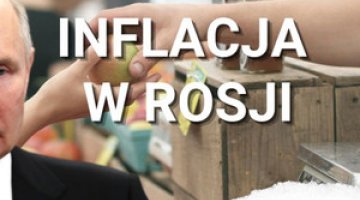A return after several years. India’s prime minister visits Moscow
On 8–9 July, India’s Prime Minister Narendra Modi paid an official visit to Russia. During the 22nd Russian-Indian summit, the two states signed a declaration on the strategic directions of economic cooperation, which included a plan to increase bilateral trade to $100 bn annually by 2030 and to enhance dialogue on establishing a free trade zone between the Eurasian Economic Union and India. Several other documents have also been adopted regarding cooperation in spheres such as education, the media, the climate, the shipbuilding industry, as well as economic, trade and investment cooperation in the Russian Far East and in the Arctic region. Modi also announced the opening of two new Indian consulates in Russia. Vladimir Putin is expected to pay a return visit to India next year.
Modi’s talks with Putin repeatedly featured the Russian invasion of Ukraine, which is problematic for the Kremlin. Modi spoke in favour of a diplomatic solution to this conflict (this proposal was included in the joint statement issued after the summit). Although when referring to the attack on children’s hospital in Kyiv (see ‘Russia damages a children’s hospital in Kyiv. Day 866 of the war’) Modi even expressed a veiled criticism of Moscow’s actions, he did not offer to act as a mediator in the peace process. Reportedly, he also requested Putin release Indian citizens including dozens of them, who were tricked into becoming involved in hostilities, which is an element of a broader trend of recruiting foreigners to join the Russian military (see ‘Putin’s foreign legion. Foreigners fighting in the war with Ukraine’). According to unofficial information shared by India, Putin allegedly agreed to this, and some of these Indian citizens have already been released from the ranks of the Russian army.
Commentary
- The visit should be viewed as a reputational success for the Kremlin. Russian propaganda will use it as proof of a failure of Western attempts to isolate Moscow internationally. The recent visit was Modi’s first trip to Russia since 2019 (the last time he met Putin was in Samarkand in Uzbekistan in September 2022) and his first bilateral visit since the inauguration (in June) of his third term as prime minister. The visit’s atmosphere was ostentatiously friendly and abounded in symbolic gestures. The negotiations were preceded by the two leaders’ meeting held in Novo-Ogaryovo near Moscow; Modi also laid a wreath at the Tomb of the Unknown Soldier and received Russia’s highest state order, the Order of St. Andrew (which had been awarded to him in 2019).
- Although both sides signalled their willingness to enhance and develop the strategic partnership between Moscow and New Delhi, Modi’s visit has not brought any new elements to this cooperation and many of the decisions adopted are declarative in nature (they may serve as the starting points for specific agreements which will be signed in the future, for example in areas such as nuclear energy development and expansion of transport corridors). However, the prospects for solving the current problems in Russian-Indian cooperation seem vague. Although according to Indian statistics for the 2023 financial year bilateral trade saw an increase of around 65%, this trade is extremely unbalanced because India exported goods worth just $4 bn and the value of its imports stood at more than $61 bn (out of which India spent as much as $49 bn on the purchase of Russian oil and oil derivatives). Moreover, the two states have not managed to devise a fully operational bilateral payment system based on their national currencies. The presently applied system relies on loro accounts which Indian banks hold for the partner states’ banks, to which sums in rupees are transferred. Due to the rapid increase in trade and Russia’s major trade surplus, it initially had significant problems with converting Indian rupees into roubles (the situation improved after some time); however, this did not concern the purchases of oil because these transactions were effected in Emirati dirhams or US dollars. Some rupees which belong to Russian companies, and which have been kept in accounts held in Indian banks were reportedly invested on the local market in shares issued by Indian companies, Indian treasury bonds and infrastructural projects. Although Russia continues to be India’s biggest supplier of armaments (36% of the value of supplies in 2019–23), its share in India’s arms imports is the lowest since the 1960s and the hostilities in Ukraine have aggravated the problems with the timeliness of supplies of equipment and spare parts.
- Moscow’s increasing dependence on Beijing has provided an impetus to the development of cooperation between Russia and India. Modi’s visit to the Kremlin after a hiatus of several years’ should be interpreted as India’s attempt offset Russia’s rapprochement with China, which is India’s rival, and to obtain provisional economic benefits. These are seen mainly in the form of purchases of fuel at an attractive price (due to Western sanctions); alongside China, India has recently become one of the two biggest recipients of Russian oil; it also buys Russian-made artificial fertilisers, in 2023 their supplies increased 1.5-fold compared with 2022. In the situation of its isolation from the West and mounting dependence on China, Russia views India as a vitally important partner. In the longer term, in the context of India’s increasingly intensive cooperation with the United States (which is intended to undermine China) and Russia’s dwindling potential to meet India’s growing needs (see ‘The twilight of the Russian-Indian strategic partnership’), maintaining strategic cooperation between the two states may be increasingly difficult.




